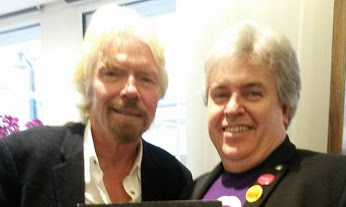 by beCause beCause Global Associate Peter Cook, CEO Human Dynamics, – Collaboration is becoming a business as usual model for doing unusually good business in an increasingly connected world. Just consider these examples: For the first time in history, pharmaceutical companies are collaborating to pool their resources and information against consumer demand for greater transparency and the sheer costs of developing life-saving drugs. Social and economic pressure for these changes is enabled by the internet and our ability to process large volumes of data for advances in medical science that ultimately benefit the whole world. Companies as diverse as Coca Cola and Heinz, Corning and Sharp are collaborating to devise products that provide superior benefits for their clients and customers.
by beCause beCause Global Associate Peter Cook, CEO Human Dynamics, – Collaboration is becoming a business as usual model for doing unusually good business in an increasingly connected world. Just consider these examples: For the first time in history, pharmaceutical companies are collaborating to pool their resources and information against consumer demand for greater transparency and the sheer costs of developing life-saving drugs. Social and economic pressure for these changes is enabled by the internet and our ability to process large volumes of data for advances in medical science that ultimately benefit the whole world. Companies as diverse as Coca Cola and Heinz, Corning and Sharp are collaborating to devise products that provide superior benefits for their clients and customers.
In my own life as an author and specialist in creative leadership and innovation, I simply could not deliver my work without collaboration. Collaboration between similar and more importantly, between people who are different than myself and without which I would be unable to reach people around the world. To harvest innovative business ideas, it is much, much more important for leaders to surround themselves with people who are not clones, but who possess talents that combine in ways to realise audacious goals. This is much more difficult as it requires us to let go of certainty and place our trust in people who think and act differently to ourselves.
We can learn about collaboration between diverse teams from a study of musical groups. Many music groups are naturally composed of diverse talents who would not necessarily choose to live together, yet none can produce music without the others. Sometimes the mixture is so volatile that it implodes, such as the meltdowns of groups such as Deep Purple, Spandau Ballet, Oasis, Rage Against the Machine etc.
I interviewed a master of the art of musical collaboration, Mr George Clinton recently. George Clinton was the principal architect of the genre of music that has come to be known as P-Funk, via his ensembles Parliament and Funkadelic. Clinton has influenced several generations of musicians since, such as The Red Hot Chilli Peppers, Prince, Primal Scream, LL Cool J, Digital Underground and Primus. He is widely cited as a major influence on the development of hip hop music. Take a look at my interview with Clinton to understand his views on diversity and collaboration:
Design Difference in
George Clinton routinely brings people into his ensembles that don’t fit the band. The essential idea behind this is what business thinkers such as Peter Senge call “creative tension”. This tension causes better ideas if the collaborators have mutual respect for one another and therefore a willingness to hear ideas that are dissonant to their own. We see this all the time at a micro scale in creative writing duos such as Lennon / Mc Cartney, Goffin / King, Simon / Garfunkel, James Watson / Francis Crick and Socrates / Plato. The trick is to find ways to scale this to larger teams and Mr Clinton has cracked this.
Know, Like and Trust your collaborators
Deep levels of collaboration arise when people know, like and trust one another. This does not mean that such teams are without conflicts, but their ability to recover from such things is what matters. Great collaborators know the difference between conflict over ideas and conflict between personalities and act accordingly to separate the two. Great collaborators argue about ideas in order to improve them, but they never make the mistake of letting arguments about ideas cross over to the people behind those ideas.
Play Tag Team
Clinton also breaks the commonly held view that it is difficult to gain great collaboration when team numbers exceed 7-8 people. He sometimes has up to 40 people on stage collaborating. Paradoxically, such levels of freedom require an equivalent amount of structure / discipline, with musical leadership passing round the band and everyone paying extremely good attention to everyone else in order to deliver a seamless performance. The parallel at work is that you can work effectively in large teams if everyone is “in the groove” and if all have excellent communication skills. It’s what George nonchalantly calls “Tag Team” but is in fact very hard to do in practice.
Collaboration between individuals and companies is becoming the way to do new things around the globe. Yet getting different people to collaborate draws upon our best team leadership skills. Next time you go to see a music performance, take a little time to study what’s going on underneath the music and you will learn a lot about team work between diverse individuals.

